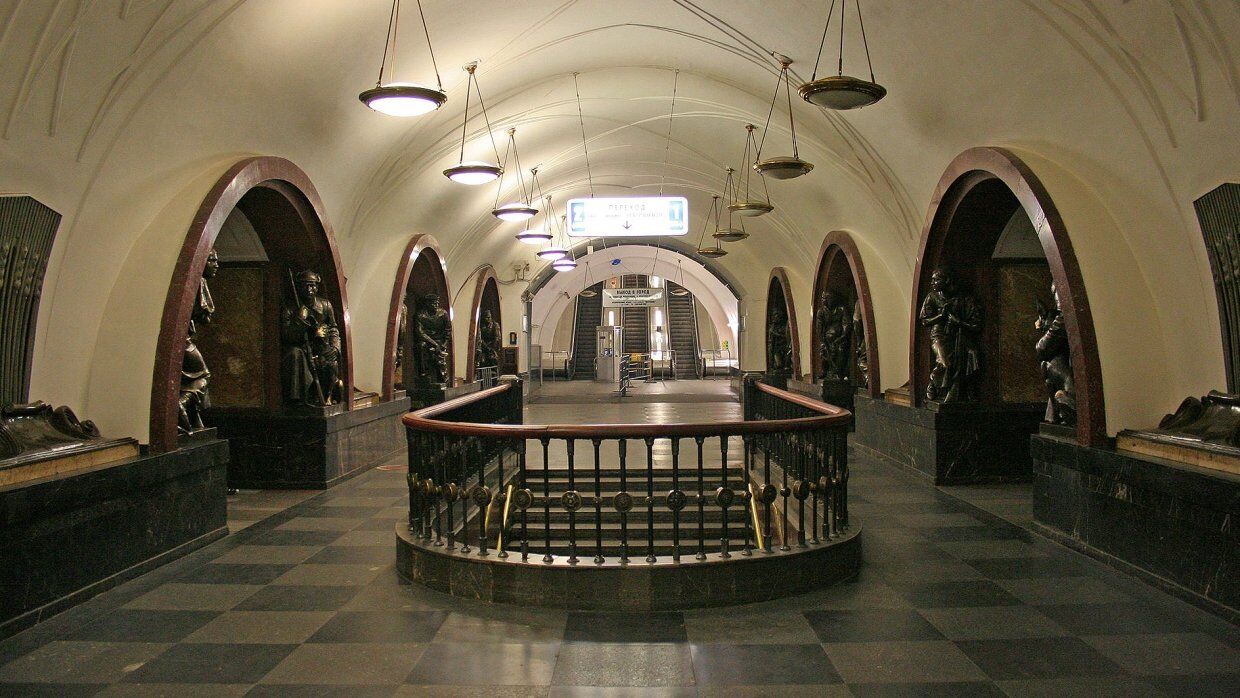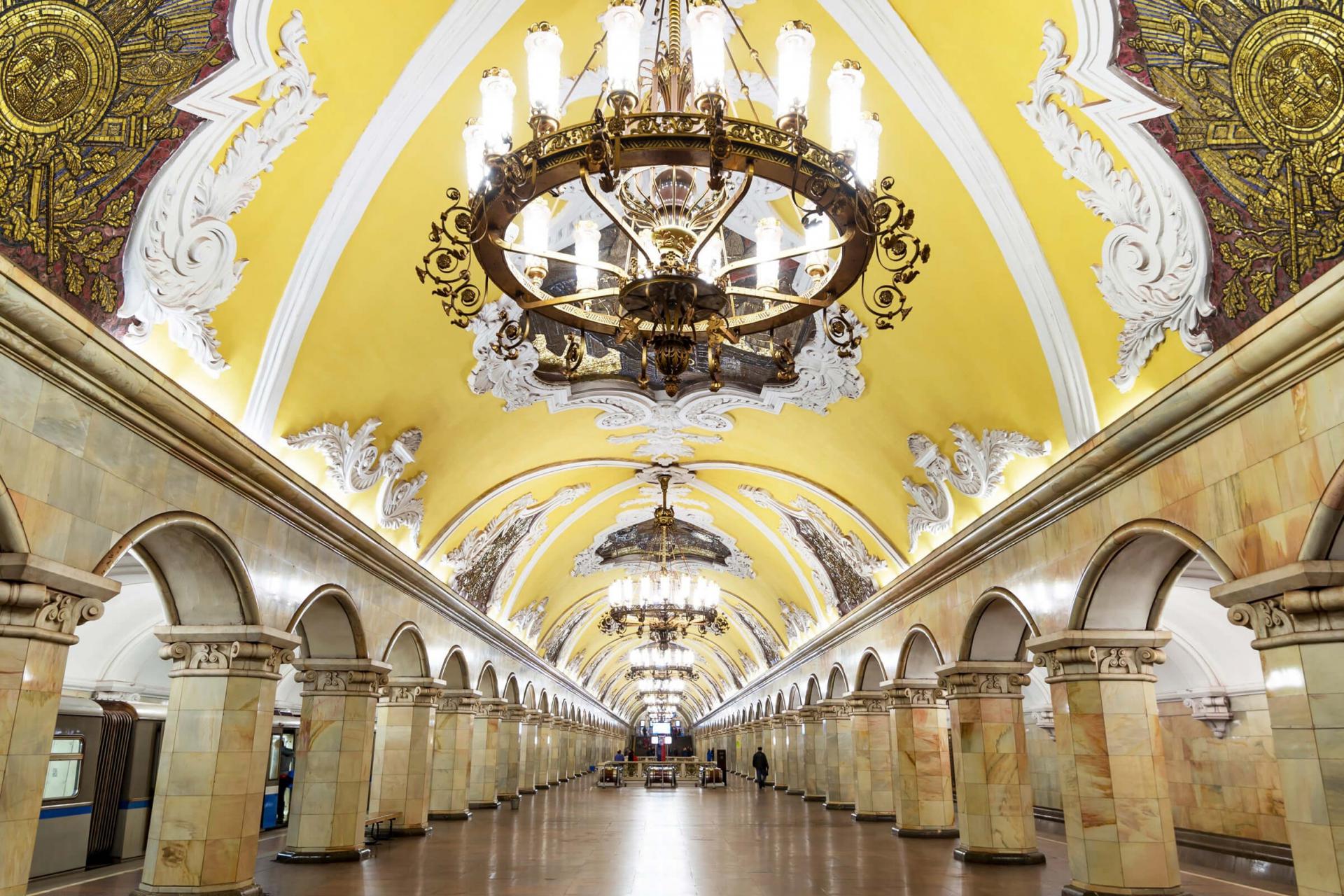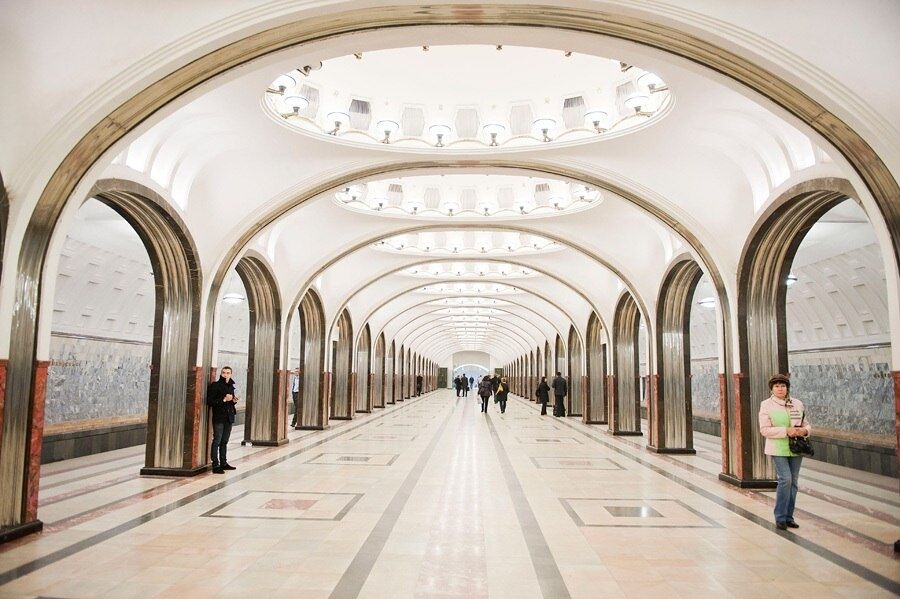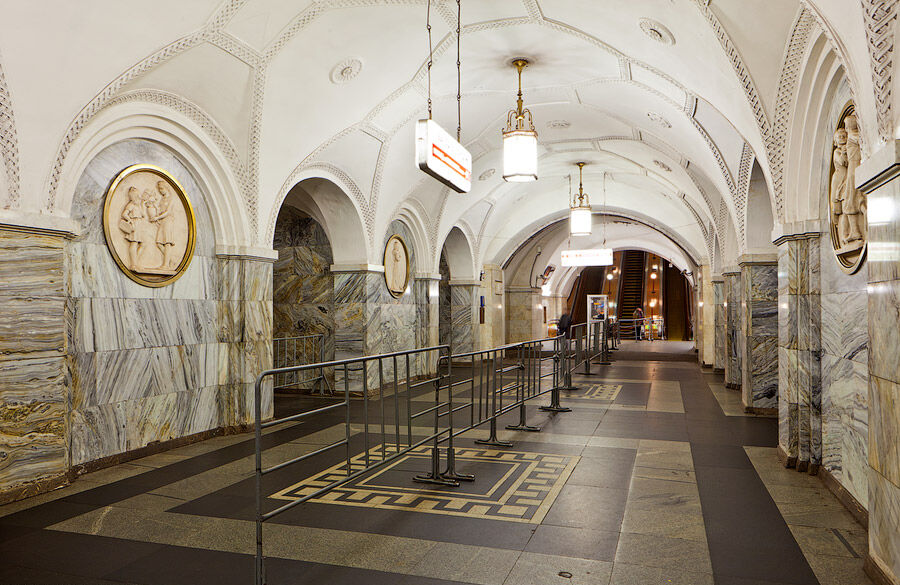What You Will Know and See
Moscow’s metro stations called the «underground palaces» of Moscow are another attraction of the city. The magnificent, festive-looking halls and vestibules are adorned with sculpture, bas-reliefs, mosaics, paintings, stained glass panels and murals executed by outstanding Russian artists.
More than 6 million passengers use the metro daily. There are more than 120 stations. Some 70, 000 square meters of mosaics, marbles, precious metals, gold and glass were lavished on the 13 stations of the original line. No passenger is expected to wait more than 3 minutes for trains which hurtle through the tunnels at speeds of up to 90kph. Even taking into account recent prices hikes, the Moscow metro is still one of the cheapest systems of its kind in the world.
Tours of Moscow Underground Lasts 1.5 hours and You Will Enjoy
Revolution Square (Ploshchad Revolyutsii) – one of the oldest metro stations. The Great October Revolution of 1917 is the theme of the station. Under each of the 40 arches is a pair of heroic bronze figures symbolizing a key group in the Bolshevik conquest of power and the building of the Soviet state: sailors, young pioneers, mothers and children, architects and sportsmen.
Komsomolskaya. Most people’s favorite, this palatial hallway of gold and florid stucco, supported on squat neoclassical marble piers and lit by elaborate chandeliers, honors the Communist Youth organization which played more than an ornamental role in the building of the metro. The mosaics depict famous scenes from Russian history. When Stalin ordered the building of the palatial Moscow metro in the 1930s no one dared raise the question of the cost of its upkeep.
Mayakovskaya. The station is named after the poet and playwright, Vladimir Mayakovsky (1893-1930). The fluorescent mosaics were designed by one of the few truly talented exponents of Socialist Realism in art, Alexander Deyneka. Its underground vestibule is supported by metal culumns faced with granite and stainless steel. In 1937 the Mayakovskaya station was awarded the Grand Prix at the International Exhibition in Paris as the first deep underground station supported with columns. At the same exhibition Moscow’s metro stations of the first line were given a prize for perfect urban design.
The Park of Culture (Park Kultury). The original terminus of the metro, the Park of Culture and rest is celebrated by the sculptural 1930s- style figures on the interior walls of the platform playing all kinds of sports.
The metro stations Mayakovskaya, Kropotkinskaya, Teatralnaya, Novoslobodskaya, Prospect Mira and Kurskaya-Radialnaya are fine examples of the architecture from the 1930s to 1950s. Some of them are protected by the state as national property.
History of the Place
Not many undergrounds systems in the world can claim to be tourists’ attractions and artistic monuments. The Moscow metro is an exception. It was built to glorify proletarian labor and had comfort, convenience and, above all, speeds in mind.
The Moscow underground was designed and built by eminent Soviet architects who aimed not only at utility and comfort but gave every station a unique look.
The first scheme to build an urban railway through the center of Moscow in 1902 was rejected out of hand by the municipal authorities. Bu the early 1930s, however, the soviet government saw the metro as an opportunity for a propaganda coup: an underground network built in record time and designed to celebrate socialist achievements. No expense was spared on this showcase constructing project, at a time when living conditions for the much-lauded working classes were appalling.
The first stretch, from Sokolniki to Park Kultury ( a distance of 11.6 km) was opened to the public on 15 May 1935.
New stations built nowadays are of simple and austere design. The passengers are guided by metro plans which are to be found in every upper entrance hall, indicators and recorded information.










